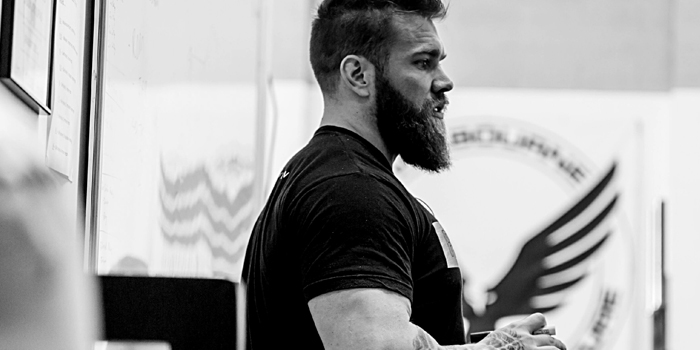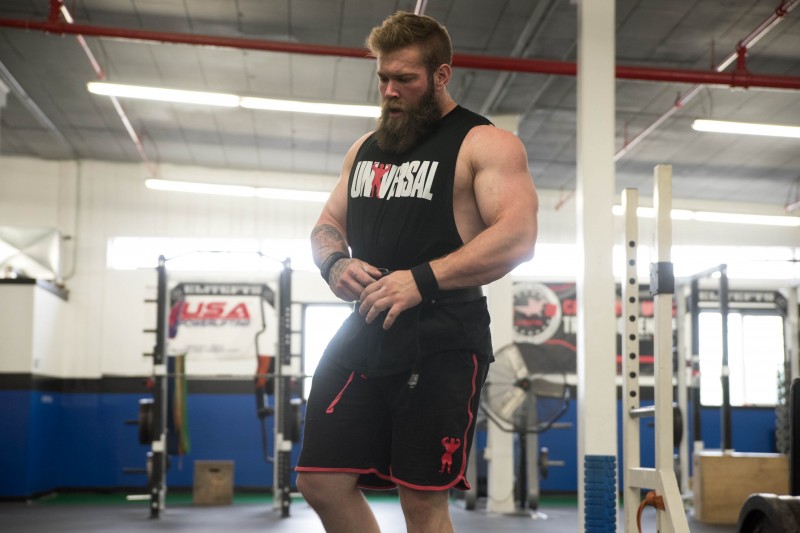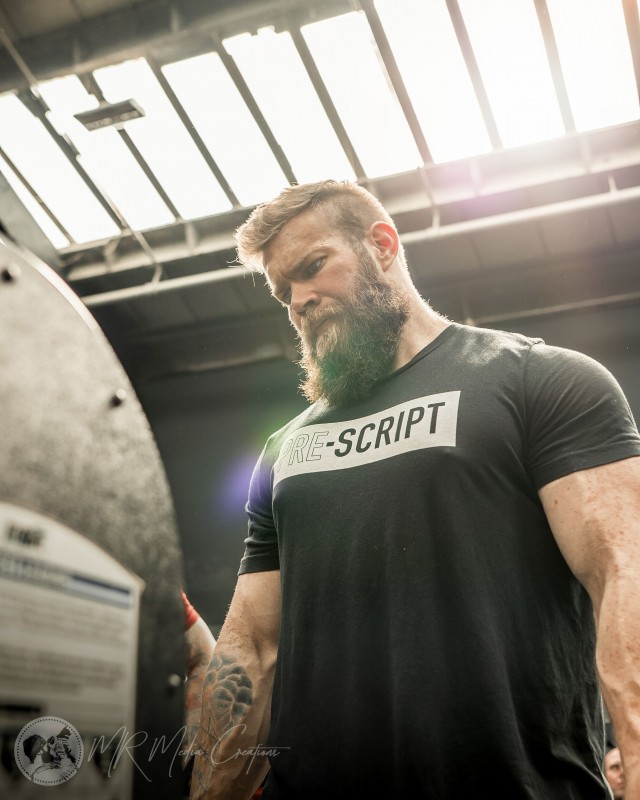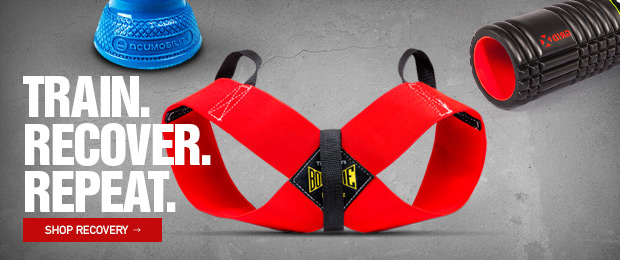
The word injury takes on many identities: strain, sprain, tear, dislocation, separation, herniation, subluxation, laceration, break, fracture, and so on. It seems like every structure has its own specific nomenclature when something goes wrong.
This breadth of language muddies the water and allows trainers and therapists to confuse their patients and athletes by implementing increasingly skeptical and confusing treatment modalities.
RECENT: Muscle Doc's Big(gest) Three: Core Movements for Strength and Performance
In simplest forms, an injury is an equation:
I = aF > Tt
Injury (I) = applied Force (aF) greater than Tissue tolerance (Tt)
This gives us a more palatable starting point when it comes to treatment, rehab, and in many ways, prevention.
Born of this model comes the abilities to begin to rework the common paradigm around injury and to reconcile true biomechanics, function, and stability.
Whether they know it or not, most therapists and trainers who are following the current injury paradigm are focusing solely on one part of the equation; they are exclusively focused on tissue tolerance.
This manifests itself in the way of nihilistic rehab protocols that focus solely around graded exposure of the muscle or tissue to tension — essentially going light on movements or exercises that are load-dependent when it comes to the elicitation of pain.
This is not to say that graded exposure to load isn’t imperative to injury rehabilitation because it is; however, to view rehab, prevention, and even performance through this narrow lens is both figuratively and literally one-dimensional.

Physics, Free-Body Diagrams, Muscle Action, and Tissue Tolerance
A quick Google search of squat biomechanics will certainly show you a results page scattered with images that look like this.
Being able to discern and extrapolate the meaning of all of the angles and moment arms and drawing conclusions thereafter is to have a decent understanding of the physics of a squat, not the biomechanics.
Understanding straight lines and shortest distances between two points existing in-between those straight lines is to only look at the body in two dimensions; these sagittal plane, stick-figure depictions of human movement are missing the dimension around a rotational axis — the axis in which isolated muscles of stability and integrated slings of stability exist.
But our body doesn’t move in straight lines; we’re hardwired to create and transmit the most efficient neurological impulses as possible. And it's with this innate efficiency in mind that we realize that our body works more like lightening than a free-body diagram. Assessing for paths of least resistance will allow us to ask better questions when it comes to rehabbing and in many ways, predicting, injury.
RELATED: How to Get Through a Near Career-Ending Injury
To understand biomechanics is to understand how we reconcile that third dimension into these drawings and extrapolate true human performance from a series of straight lines.
The Path of Least Resistance
Let’s bring to light this theory of path of least resistance. In a deadlift, for example, it can often be reported of lifters having unilateral low back pain or sacroiliac joint (SIJ) pain that plagues them only in the deadlift.
Now, if we think about movements like the squat, there are enough shear forces applied to the SIJ that a true injury at the SIJ would be present in both deadlifts and squats. Then how is it possible for this pain to lift-specific?
If we consider the differences in loading parameters between the squat and the deadlift, we realize that the deadlift loads the barbell through the humerus, whereas the squat loads the barbell directly on the spine. This difference becomes key as we begin to examine what it is specifically about the deadlift that signals pain at the SIJ.
In diving deeper, we realize that the biggest differentiating factor between loading a barbell in your hands versus on your spine is the demand on the lats in the deadlift as being the only muscle that connects the humerus to the spine.
With this in mind, we can superimpose this lightning analogy, let's imagine that each latissimus dorsi acts as a lightning rod in the deadlift, drawing to it force applied by the barbell at the level of the shoulder.
In a perfect system, these lightning rods are conductive enough to channel and buffer that force at the shoulder and not allow for any energy to have to be applied elsewhere. But if there is a deficiency in the strength of the lats or perhaps a lack of range of motion into external rotation of the shoulder, that would predispose the lats to be a less dominant extender of the shoulder in the movement of a deadlift.
The lightning rod at the level of the shoulder is diminished, shortened, less conductive, therefore allowing that force of the barbell to bypass the checkpoint at the shoulder and begin to apply force down through the system of the body. In this case, when we follow the lats downward, we can follow it obliquely toward the spine, as it intercepts with the thoracolumbar fascia, and then follow that fascia into the SIJ as it creates the posterior oblique sling with the opposite side glute max.

In this journey, force finds another lightning rod, another place to look to resist force; the only problem is that place now becomes the SIJ, a joint that’s reinforced by ligaments that are very sensitive to excess in applied force. This excess will now signal pain as a means of protecting the SIJ from potential damage.
That signal, because it’s only specific to the deadlift and not is present in other lifts that utilize the SIJ, is not, in fact, a true injury or insult to the joint, but rather, a sign that the joint is taking on more applied force than it’s meant to because of the relative weakness at the lats.
READ MORE: 3 Things Physical Therapy School Taught Me About Being A Strength Coach
In the conventional tissue-centric view of injury, we would be left attempting to reinforce the tolerance of the SIJ itself, implementing remedial strategies to help bolster the joint without asking the question as to why that joint has so much applied force on it in the first place.
When we ask better questions and consider the applied force part of the injury equation, we begin to develop more sophisticated strategies in overcoming this and we begin to lay down lightning rods where necessary and buffer forces away from tissues that are intolerant to excess forces.
Let’s go through another common injury that takes a very tissue-centric view in common rehab and prevention circles.
Rotator cuff injuries, especially injuries of the supraspinatus, are very commonly treated by attempting to build strength in the rotator cuff itself rather than asking why the rotator cuff had so much force applied to it in the first place.
Rotator cuff weakness, as a diagnosis, is going to immediately indicate the mechanism of correction. If something is weak, we inherently know to strengthen it. So the majority of protocols include various angles of training the individual actions of the four muscles of the rotator cuff.
But if we think about the applied force side of the equation, we need to ask ourselves why are so many forces being applied into the cuff to begin with. This is a better question because it will consider the shoulders integrative function into the Tensegrity Model of the body rather than just focusing on the tissue of the rotator cuff itself.
These questions about why there is so much applied force converging at the rotator cuff will have us looking at biases of internal rotation of the shoulder, positions, and stability to the scapula as well as position and mobility of the thoracic spine.
Conclusion
This is an abstract thought process that requires a deep understanding of structural and muscular anatomy. But this becomes our greatest tool in knowing how the body is going to react to aberrant stressors.
Remember, pain is a light on the dashboard that says, “check engine.” Our job for us, as coaches, is to run effective diagnostic codes and perform real-time maintenance on our athletes.
Stay strong,
Dr. Jordan Shallow, D.C.











1 Comment